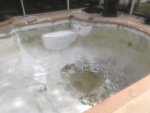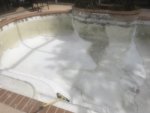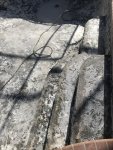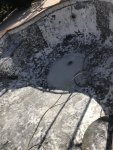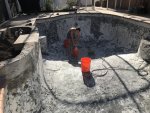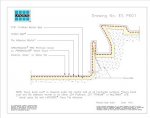I tried to evaluate the option of the water feature leaking but there are places that are not anywhere near the water feature and they still sounded hollow.
I thought that I could use the white stuff behind it! Thank God I ask for help here. Now I can keep chipping away the white stuff as well.
What I don't understand is why the last resurfacing was done on top of the old resurfacing, it was a very cheap way of doing it!
THANK YOU FOR YOUR HELP!
I thought that I could use the white stuff behind it! Thank God I ask for help here. Now I can keep chipping away the white stuff as well.
What I don't understand is why the last resurfacing was done on top of the old resurfacing, it was a very cheap way of doing it!
THANK YOU FOR YOUR HELP!
No, you have lots of prep ahead if you want the next re plaster to adhere properly. All of the re plaster has to come off and "chip" all of the old plaster underneath. Then get every bit of non plaster material off with a pressure washer. Find the highest output pressure you can find. Maybe rent a gas powered one. You want the surface to be as clean and rough as possible. I wouldn't advise using a bonding material or "bond coat".
Ground movement creates cracks, not delaminations. A leak in your water feature (in the right place) MAY cause delamination, but it would be localized to the area. It wouldn't likely spread throughout the whole pool.
Last edited:


